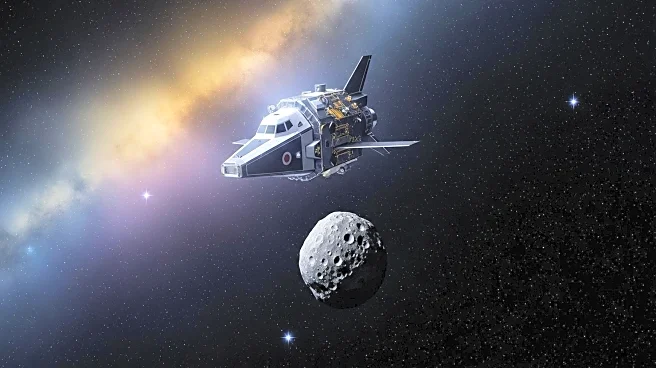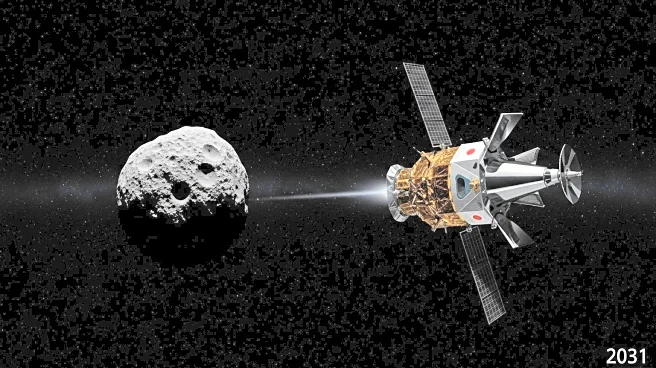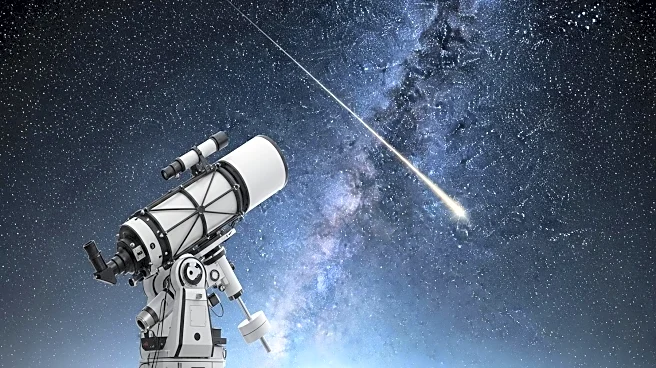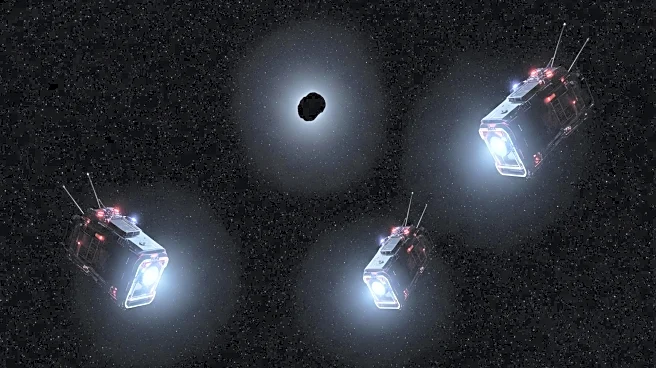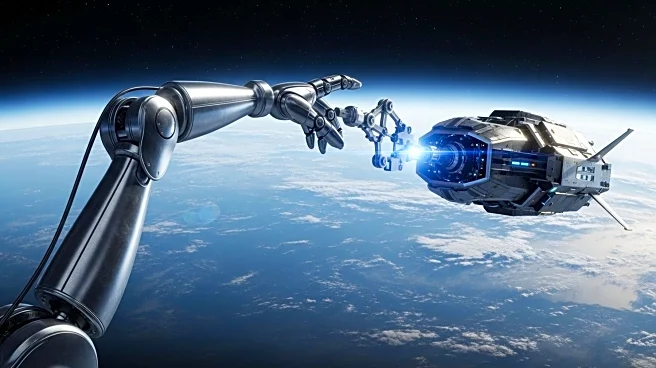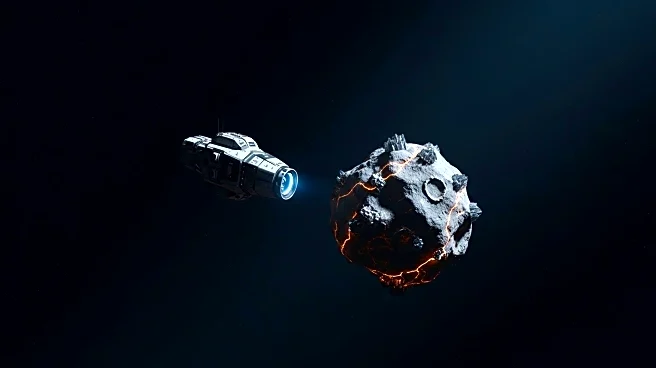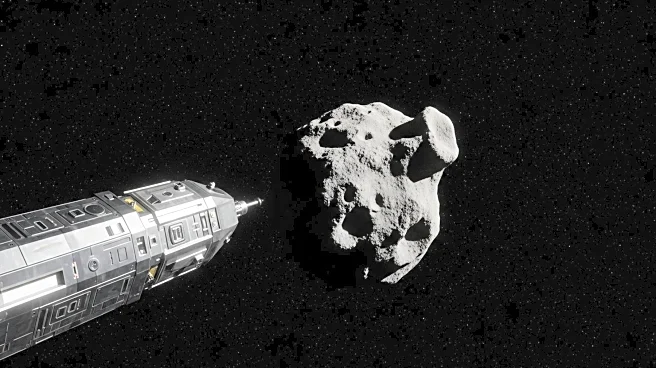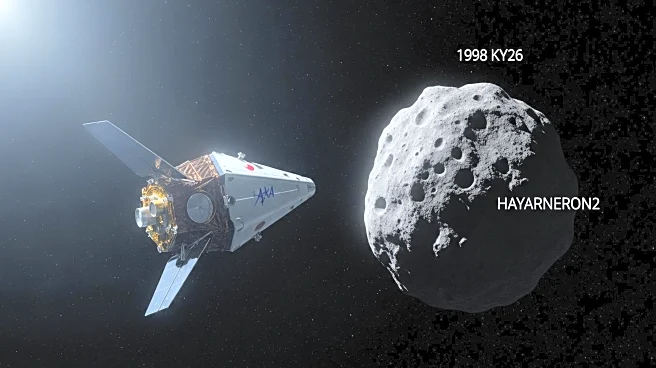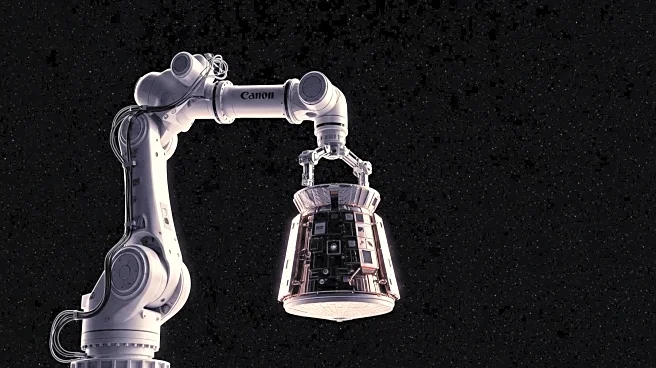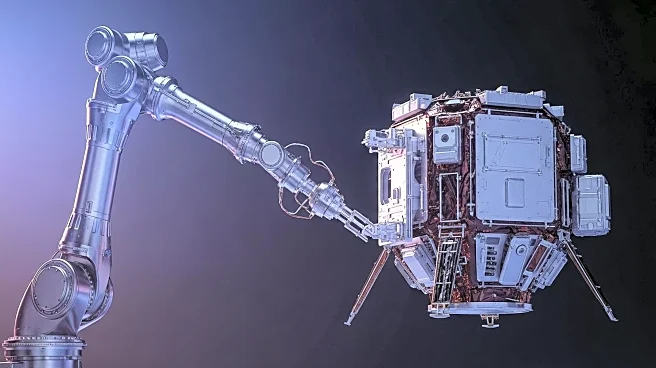What's Happening?
Japan's Hayabusa2 mission, operated by the Japanese Aerospace Exploration Agency (JAXA), is set to land on asteroid 1998 KY26 in 2031. Recent observations have revealed discrepancies in previous data, indicating the asteroid is smaller and spins faster than initially thought. These findings, published in Nature, suggest the asteroid is 36 feet wide and rotates every five minutes, contrary to earlier estimates of 98 feet and a ten-minute rotation. This new data complicates the mission, which aims to gather insights into small asteroids, a first in space exploration.
Why It's Important?
The Hayabusa2 mission's success could significantly impact future space exploration, particularly in understanding small asteroids. These insights are crucial for potential asteroid mining and developing strategies to protect Earth from hazardous asteroids. The mission's challenges highlight the complexities of space exploration and the need for precise data. The findings could pave the way for advancements in technology and methodology in studying celestial bodies, influencing both scientific research and commercial space endeavors.
What's Next?
The mission team will need to adjust their plans based on the new data, potentially redesigning the spacecraft's approach and landing strategy. Continued observations and studies will be crucial to ensure the mission's success. The scientific community will be closely monitoring the mission's progress, as it could set a precedent for future asteroid exploration missions. The outcome may influence international collaboration in space exploration and the development of new technologies for studying small celestial bodies.

